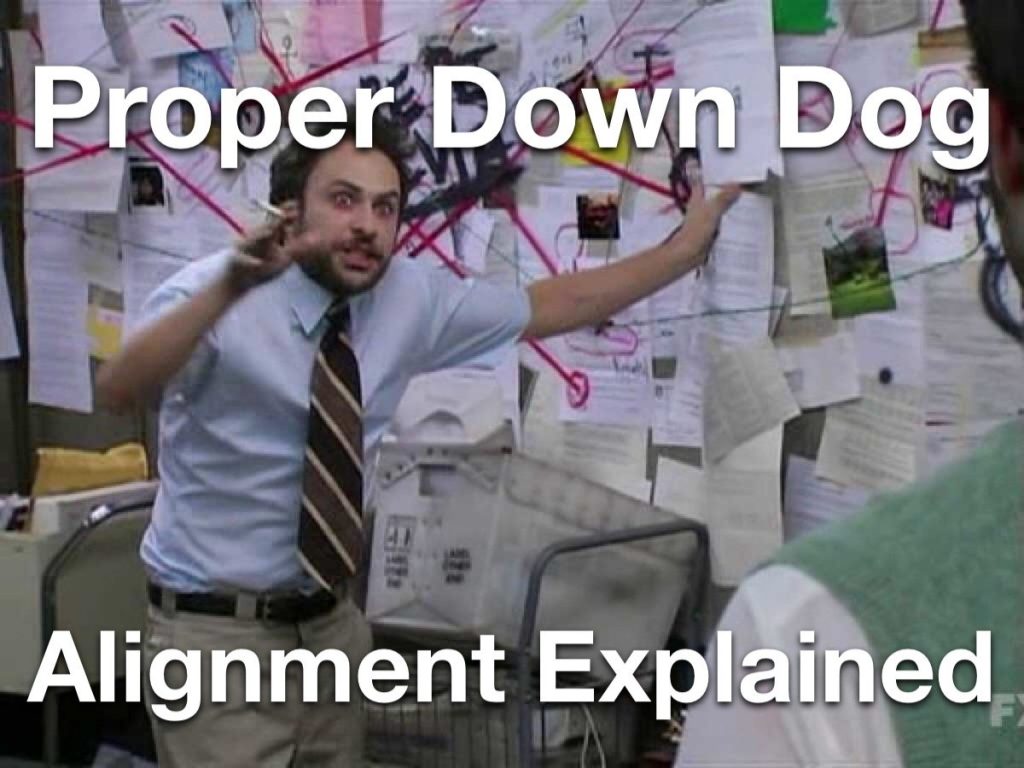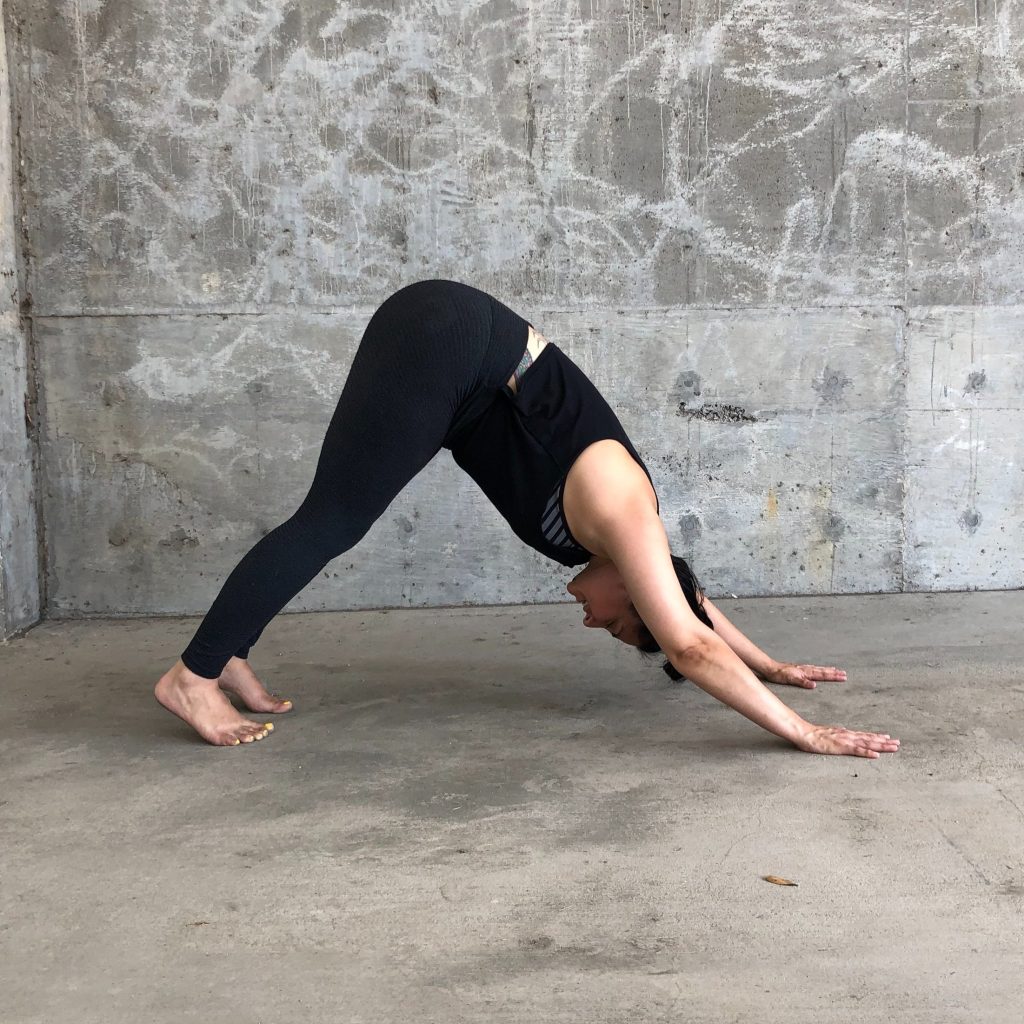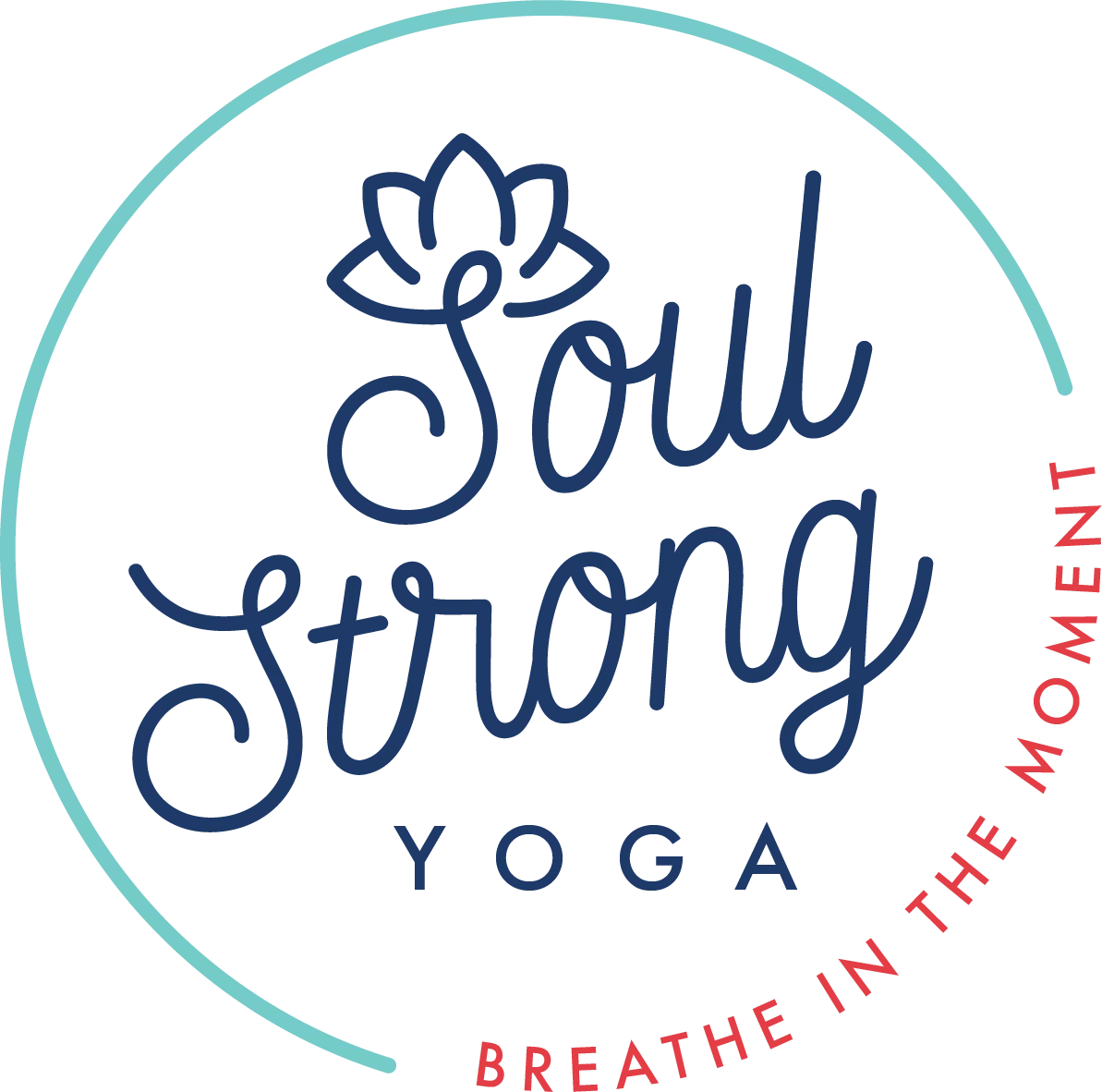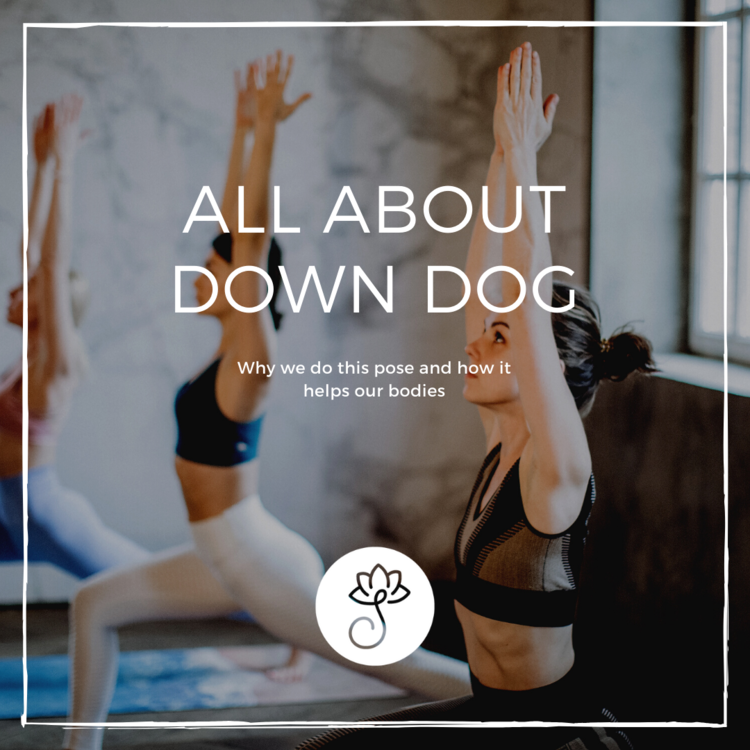Let’s Get Curious about Down Dog
This time of year, when there’s so much focus on themes like renewal and goal setting, I like to get curious about where we can find renewal in the mundane, the everyday, the seemingly ordinary. For the seasoned yogi, Downward Facing Dog may be a pose you hardly think about anymore. For the yoga newbie, perhaps this is the only pose you know, but no one has ever broken down WHY we do it, or what’s happening during it! This month, I want to challenge you to renew your attention toward your Downward Facing Dogs- whether they’re modified at the wall, supported by blocks, or anywhere in between.
Downward Facing Dog comes from the Sanskrit, Adho Mukha Svanasana. There are some pretty great Sanskrit apps and YouTube channels if you want to hear that pronounced out loud. Depending on what’s happening in your body, this pose more or less looks like we’re creating a triangular shape. The hips are high in the sky while our hands and feet make the bottom two points of the triangle.

Is Down Dog a Resting Pose?
If Down Dog feels difficult for you, that might be because…it simply is! This pose can be tough. There’s a myth that floats around that Down Dog is a “resting pose,” but this pose is actually incredibly active.
Downward Facing Dog Modifications and Basic Alignment
One of the simplest ways to get into Downward Facing Dog is to come onto all fours in a tabletop shape (add a blanket under your knees for extra cushion!). From here, tuck your toes, press through your palms to lengthen your arms, and start to send your hips up into the sky. Once you’re there, you might be privy to another myth: your heels should be touching the ground. Nah! Bend your knees to start, unless they hit the floor naturally. Press through your palms, like you’re pressing the ground away from you, to emphasize the length in your spine.
Once you’re in a Down Dog-like shape (again, all of our Down Dogs will look different!), SO much is happening. Technically, Down Dog is an inverted posture because your hips are above your head. This means, you might feel a little head rush- especially if you hang out here for a while. This also means that this pose can be incredibly energizing! As you press through your palms in this pose, your shoulder joint is flexing. You’re probably experiencing extension in your upper thoracic spine, too- meaning there’s a mini upper backbend going on here! So, if your shoulders and upper back are tight, you might REALLY feel it here. Lizzie Lasater has a great video on what to do if you’re experiencing that HERE. There are many ways you can adjust your Down Dog to meet your current mobility. In addition to all of this, you might get a good hamstring and calf stretch as you hang out here. And, please don’t forget your core! In the Ashtanga tradition, Down Dog is commonly held for about 5 breaths. With every exhale that you take, imagine drawing your belly button up and in to access your core here. Remember to plant your feet wide enough to make room for your belly.
Now, did you ever think that much was going on in such a common pose? This can be both overwhelming and fascinating! We hope you can experience the latter today and enjoy exploring your Downward Facing Dog!


